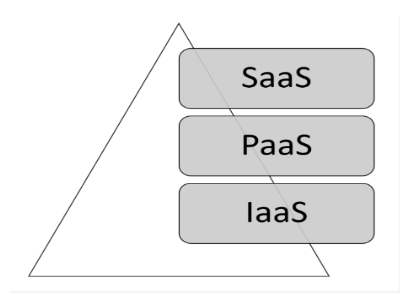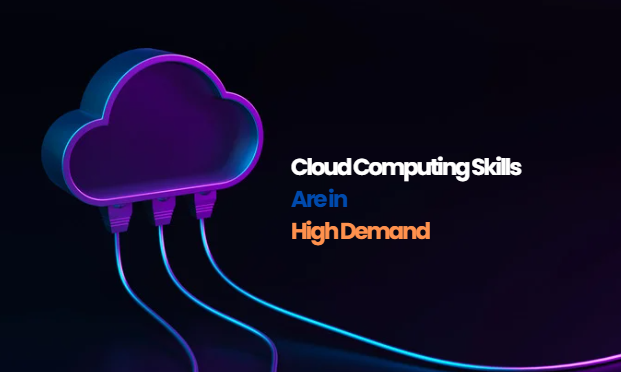
1. What is Microsoft Azure and why is it important?
Azure is a cloud computing platform provided by Microsoft. It offers a wide range of services and resources for building, deploying, and managing applications and services.
Azure is important because it allows organizations to scale their infrastructure, improve agility, and reduce costs by leveraging cloud technology.
2. Why to use cloud instead of on premise?
- Cloud – On demand resource provisioning.
- Increase speed
- Cost effective
3. What are the main components of Azure?
The main components of Azure include:
- Compute: Virtual Machines, Azure Functions, App Services, etc.
- Storage: Blob Storage, File Storage, Table Storage, etc.
- Networking: Virtual Networks, Load Balancers, VPN Gateways, etc.
- Databases: Azure SQL Database, Cosmos DB, Azure Database for MySQL, etc.
- Identity and Access Management: Azure Active Directory, Azure AD B2C, etc.
4. Compare AWS and Azure cloud services
- AWS provides a private virtual cloud, whereas Azure provides network virtual cloud.
- AWS provides a direct connection and Azure provides an express connection.
- AWS has 61 zones available & Azure has nearly 140 zones available.
5. Name various services offered by Azure cloud

> Infrastructure as a Service (IaaS)
> Platform-as-a-Service (PaaS)
> Software-as-a-Service (SaaS)
6. Define IaaS
Infrastructure-as-a-Service (IaaS) is the most flexible category of cloud services. Instead of buying hardware, with IaaS, you rent IT infrastructure servers and virtual machines (VMs), storage, networks, and operating systems from Microsoft on a pay-as-you-go basis, and you are responsible for managing the operating systems, data, and applications.
Azure virtual machines are Infrastructure as a Service (IaaS) and Azure page blobs are the backbone of the virtual disks platform for Azure IaaS.
Want to enroll with us? Discover the Perfect Course for Your Career at traininghub.io
7. Define PaaS
The Platform-as-a-Service (PaaS) solution requires less user management and does not provide access to the operating system. That means that the PaaS is a complete development and deployment environment in the cloud and provides a framework that developers can build upon to develop or customize cloud-based applications.
For example, the Azure Web Apps service provides an environment for you to host your web applications but you don't have to access the virtual machine and the operating system. Azure SQL Database is a fully managed platform as a service (PaaS) database engine that handles most of the database management functions such as upgrading, patching, backups, and monitoring without user involvement.
8. Define SaaS
Software-as-a-Service (SaaS) solutions require the least management. Microsoft is responsible for managing everything, and you just use the software. SaaS allows you to connect to and use cloud-based apps over the Internet. When you are implementing a SaaS solution, you are responsible for configuring the SaaS solution. Common examples are Outlook email, calendar, and office tools (such as Microsoft Office 365).
9. What is Cloud Computing?
Cloud computing is the delivery of computing resources and services over the internet. Instead of relying on local servers or personal devices to store and process data, cloud computing allows users to access and use a shared pool of resources, including servers, storage, databases, networking, software, and applications, provided by a cloud service provider.
10. What sorts of web applications can run on Azure?
Azure supports multiple types of web applications, including various flavors of .NET, node.js, PHP, Python, Java and more.
11. What are the Cloud Deployment Models in Azure?
Azure offers three main cloud deployment models:
- Public Cloud
- Private Cloud
- Hybrid Cloud
12. Define Public Cloud
The public cloud model in Azure refers to the deployment of resources and services on shared infrastructure that is owned and managed by Microsoft. It allows organizations and individuals to access and utilize Azure services over the internet. This model offers scalability, flexibility, and cost-efficiency, as users can leverage the resources provided by Azure without the need for upfront investments in hardware or infrastructure.
13. Define Private cloud
The private cloud model in Azure involves the deployment of resources and services on dedicated infrastructure that is exclusive to a single organization. It can be hosted on-premises or in a third-party data center. Private clouds offer enhanced security, control, and customization options, making them suitable for organizations with strict compliance requirements or specific infrastructure needs. Azure provides services like Azure Stack for creating a consistent hybrid cloud environment, allowing organizations to maintain control over their data and applications while benefiting from Azure services.
14. Define Hybrid Cloud
The hybrid cloud model in Azure combines the use of both public and private cloud resources. It allows organizations to leverage the scalability and flexibility of the public cloud while maintaining certain resources and applications in their private cloud environment. Azure provides tools and services for seamless integration and management of hybrid environments, enabling organizations to extend their on-premises infrastructure to Azure and achieve a hybrid cloud architecture that meets their specific requirements.
15. Which are the three main components of the Windows Azure Platform?
Following are the main components of Windows Azure:
- Compute
- Storage
- AppFabric
16. Define ARM
ARM is an abbreviation for Azure Resource Manager. It was first announced with the new Azure portal “portal.azure.com” Build in 2014. It simply provides a new set of API’s that are more advanced, cheaper and efficient in deploying, configuring and managing Azure resources. The old Azure Classic portal limited users for deploying, configuring and managing single resources at a particular instance, whereas the ARM allows the users to simultaneously manage multiple resources.
17. What is Azure NSG?
Azure NSG or Network Security Group is the solution that Azure offers to network admins to manage network communications to and from various different resources. It is a sequential collection of rules that an administrator has described in a planned structure to allow or deny network traffic. NSG provides stateful security, i.e. if you open a specific port for outbound traffic, you don’t need to allow inbound port for the returning response.
18. What is Availability Set?
An availability set is a feature that Azure offers for highly available VM’s to be logically grouped and systematically placed on different physical hosts, such that if a given host or the network or any other resource hosting the server fails, still the other VM’s that are the participant in the availability set would have no impact.
19. What is the use of Windows Azure Compute Emulator?
The Compute emulator is a local emulator of Windows Azure which we can use to build and test our applications before deploying it to Microsoft Azure Cloud.
20. Will it be possible to create a VM using Azure Resource Manager in a Virtual Network that was created using classic deployment?
This is not possible. Using Azure Resource Manager, we cannot deploy a virtual machine into a virtual network that was created using Azure classic deployment.
21. Define virtual machine scale sets in Azure
VMSS – Virtual machine scale sets, are the one that you simply can use to deploy and manage a group of identical VM’s. With all the VM instances configured the same, scale sets are designed to support true Autoscale, and no pre-provisioning of VMs is required. So it is very easy to build large-scale services that target big data, big compute, and containerized workloads.
22. Define Domain
The domain is the interconnected and interlinked nodes that are often a measure undertaken by the organization and these relations will be carried by only one point of the organization.
23. What are Fault Domains?
A fault domain is a logical group of underlying hardware that share a common power source and network switch, almost like a rack within an on premise data-center. As we create VMs within the same availability set, the Azure platform will automatically distribute our VMs across the fault domains defined by us. This approach limits the effect of power interruptions, potential physical hardware failures, or network outages.
24. What are Update Domains?
An update domain may be a logical group of underlying hardware which will undergo maintenance or are often rebooted at an equivalent time. As we create VMs within the same availability set, the Azure platform will automatically distribute our VMs across these update domains configured by us. This approach ensures that a minimum of one instance of your application always remains running because the Azure platform undergoes periodic maintenance. The order of update domains being rebooted might not proceed sequentially during planned maintenance, but just one update domain is rebooted at a time.
25. What is Azure Service Level Agreement (SLA)?
The Azure SLA ensures that, when you send two or more role instances for each role, access to your cloud service will be maintained not less than 99.95% of the time. Additionally, when a role instance’s procedure isn’t running, an identification and re-correction activity will be started within 99.9% of the time.
26. Why is Azure Active Directory used?
Azure Active Directory is an IAM i.e. Identity and Access Management provider system. It is wont to grant access to your employees to specific products and services in your network. For example: Salesforce.com, twitter etc. Azure AD has some in-built support for applications in its gallery which may be added directly.
27. What is a VNet?
VNet may be a representation of your own network within the cloud. It logically isolates your instances launched within the cloud, from the remainder of your resources.
28. What are the different Storage features in Windows Azure?
- Blob
- File
- Tableau
- Queue
BLOB: BLOBs offer a component for storing a lot of content or binary data, for instance, pictures, sound and visual documents. It can add up to a maximum of 200 terabytes and can be taken up by utilizing REST APIs.
File: Files offers simple, secure and fully managed file shares. File shares in the cloud can be accessible using the industry-standard SMB 3.0 and HTTPS protocol. We can mount file shares simultaneously in the cloud or on-premises on Linux, Windows, and macOS.
Table: Tables represent storage areas across machines for information that’s within the sort of properties on the cloud.
Queue: the only target of a Queue is to empower communication amongst Web and Worker Role instances. They help in storing messages that may be accessed by a customer.
29. What is the Azure App Service?
Azure App Service is a PaaS service model. For skilled developers, it is a completely managed PaaS – Platform as a Service offering, that conveys a vivid arrangement of abilities to web, mobile and integration scenarios.
Mobile Apps in Azure App Service offer a universally accessible mobile application development platform which is easily adaptable for Enterprise Developers and System Integrators that conveys a rich set of capacities to mobile engineers.
30. What are the roles available in the Windows Azure Cloud?
There are three types of roles in Microsoft Azure cloud:
- Web Role – A web role is basically used to implement a website, using languages supported by the IIS platform like Node JS, PHP, .NET, etc. It is configured and customized to run APIs and web applications.
- Worker Role – A worker role is more like a helper to the Web role. It is used to perform background processes while the Web Role is used to deploy the website.
- VM Role – The VM role is used by a user to schedule windows services and other tasks. This role is used to customize the virtual machines on which the web and worker role is running.
31. What is the use of a cloud configuration file?
The primary usage of the cloud configuration file (.csfg) is to hold the main copy of certificates, to have a storage of user-defined settings, and to create several instances for any service projects.
32. Differentiate the verbose and minimal monitoring
The verbose monitoring collects metrics based on the performance that allows close analysis of data that is fed while the application is processing. Minimal monitoring, on the other hand, is a default configuration that makes use of the performance counters collected from the operating system of the host.
33. Define Azure Diagnostic
Azure Diagnostic is an API-based system that gathers the data to diagnose the application which is constantly running. It helps in tuning the verbose monitoring that enables roles of the cloud services.
34. Define table storage
Table storage is an interface that contains the capability of storing a bulk amount of structured but non-relational data. It is a service of the NoSQL data store that takes authenticated calls from either outside or inside the Azure Cloud. The table is a collaborative entity that has a set of properties that is paired up with name and value.
35.What is the storage key in Azure?
In Azure, a storage key is a security credential that grants access and permission to interact with an Azure storage account. It is essentially a pair of access keys, namely the primary key and the secondary key, associated with the storage account.
When you create an Azure storage account, two storage keys are automatically generated. These keys are long, randomly generated strings that serve as a form of authentication and authorization for accessing the storage account. Each storage key is unique to the storage account and provides full access privileges.
36. What is Redis?
Redis is an incredibly large-scale, memory-intensive database application capable of enormous numbers of requests per second at very low latency. The Azure Cache for Redis is a full implementation of Redis that can be accessed by any application either inside or outside of Azure. It also can be used either by itself or in conjunction with other database solutions such as Azure SQL or Cosmos DB.
Transform Your Skills for Your Career with Our Courses at traininghub.io
Suggested blogs
14 December 2023
30 November 2023
Recent blogs

21 February 2025
|
06 February 2025
|